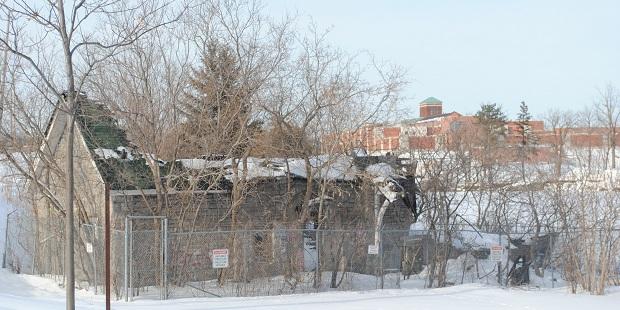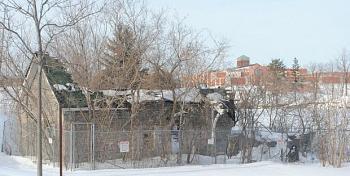Imagine you owned a derelict property on the river, with a beautiful view of Parliament Hill. It’s close to downtown and has plenty of parking, and is the perfect size for a charming waterfront restaurant. Would you fix it up and sell it? Would you try running it yourself?
Well, if you were the City of Ottawa, you would just leave it to rot.
The stone shell of a water pumping station on city property near Lemieux Island has, from a lack of funding and interest, gone without repairs for 23 years.
“The building belongs to the City of Ottawa … and they do not seem to have any funds available for this type of work,” says Linda Hoad of the Hintonburg Community Association.
The Hintonburg Pumphouse is on River Street, between the Ottawa River Parkway and the bridge to Lemieux Island. It was built in 1899 to pump water into the village of Hintonburg. When the village was absorbed into the City of Ottawa in 1907, the pumphouse served the west end of Ottawa. It was decommissioned in 1912.
The building was renovated in 1932, becoming a gatehouse for the new Lemieux Island purification plant and a residence for a senior public servant in the city’s water department. That second use was eventually phased out; a proposal was made to turn the building into a restaurant in 1983, but plans fell through.
In 1987, the building was designated as a municipal heritage site. In 1989, a fire broke out inside the building, gutting the interior and destroying the roof. The exterior stone walls remain standing, but the city has made no repairs to the building since the fire.
The Hintonburg-Mechanicsville Neighbourhood Plan [PDF] released in February 2010 recommended the HCA and the city "stabilize the remains" of the building.
“Most of the damage to the building has been caused by neglect after the fire damaged the roof,” says Hoad.
The city recently resurfaced River Street, Slidell Street and Bayview Road—the streets that lead from the pumphouse to Wellington Street West.
“From a heritage perspective, restoring the building would definitely be an option,” says Lesley Collins, a city heritage planner in the Planning and Growth Management Department.
One major hurdle to renovating the building is the zoning of the property.
“The zoning for the site is environmental preserve (with heritage overlay), so I think that would pose issues,” says Collins.
If something like a restaurant were to be introduced into a refurbished pumphouse, the zoning would have to be changed to heritage commercial.
The ruins of the pumphouse are normally hidden by trees and wild underbrush during the year. During winter, however, the shell of the building can be clearly seen from the road.
The area is surrounded by a chain-link fence. However, the secluded and hidden nature of the building makes it a tempting place for illicit activities.
“I reported some evidence of intrusion through the fence a couple of years ago,” says Hoad.
Internet site reference: http://ottawa.openfile.ca/ottawa/text/hintonburg-pumphouse-rots-waterfront














